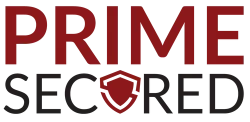We used to see the IT (information technology) department at work as just some support guy who helped with our internet connection or printers at the office. But, in a world that now uses digital devices for every single process at work and crucial financial moves, IT is no longer just a support function—it’s a critical component of business success and innovation.
Technology is at the core of every business operation today, but its rapid evolution introduces new complexities, costs, and security risks. From cloud infrastructure to cybersecurity services, managing IT has become more than just keeping computers running. It requires a strategic, proactive approach—and that’s where managed IT services providers step in.
We hope that this Managed IT guide will help you understand what exactly Managed IT is, why it matters, and how it drives digital transformation.
We’ll also highlight how Prime Secured’s thorough, honest, cybersecurity-forward approach makes it a standout service provider in the services landscape. Whether you’re new to the concept or looking to deepen your understanding, read on and navigate the complexities of IT with confidence and clarity.
What Exactly Are Managed IT Services?
Managed IT services involve the proactive outsourcing of your IT tasks, mechanisms, and responsibilities to third-party providers known as Managed Service Providers (MSPs).
These providers handle a wide range of IT functions, including infrastructure management, cloud services, cybersecurity, and end-user support—all tailored to your business goals.
On top of being aligned with business objectives, they are governed by Service Level Agreements (SLAs), which define the quality and performance commitments the provider must meet. The MSP assumes shared responsibility for managing the IT environment, allowing businesses to leverage external expertise and technology without internal management pressure.
Key Features of Managed IT
- Ongoing Support: Managed IT services provide continuous monitoring and maintenance of IT environments, ensuring systems operate optimally and issues are addressed proactively. This support minimizes downtime and enhances productivity by dealing with potential disruptions before they escalate.
- Outsourced but Integrated: Although IT functions are outsourced, MSPs integrate their services seamlessly into existing business operations. This means they’re not just an external entity but a crucial extension of the company’s in-house team, working towards updating tribal knowledge and common business goals.
- Strategic Planning and Guidance: MSPs offer more than just technical support; they provide strategic insights and guidance to align IT strategies with business objectives. By leveraging their extensive industry knowledge, they help businesses navigate the complexities of technology trends and innovations.
What Makes a Service “Managed”?
Managed services are characterized by several defining elements, including:
- SLAs (Service Level Agreements): These agreements set clear expectations and performance benchmarks for the service provider, ensuring transparency and accountability.
- Automation: Through the use of advanced automation tools, MSPs can streamline IT processes, improve efficiency, no longer depend on internal tribal knowledge, and reduce human error, resulting in faster service delivery.
- Expertise Layers: Managed services are not one-size-fits-all. MSPs layer their offerings to provide depth in specific IT domains, allowing businesses to tailor solutions that precisely fit their needs.
Common Types of Services in Managed IT
- Managed Security Services (MSSP): Focused on protecting businesses from cyber threats, these services include threat detection, prevention, and response.
- Managed Network Services: Encompass the management of network reliability and performance, covering areas such as bandwidth management and network monitoring.
- Managed Cloud Services: Offer assistance with cloud strategy, migration, and optimization, ensuring businesses get the most from their cloud investments.
- Managed End-User Support (Helpdesk): Provides users with round-the-clock support for technical issues, ensuring quick resolution of IT-related problems and enhancing user satisfaction.
- Remote Monitoring and Management (RMM): Utilizes advanced tools to monitor and manage IT infrastructure remotely, allowing for proactive maintenance and quick issue resolution.
- Virtual CIO and IT Strategy Services: Delivers executive-level guidance on IT strategy and investment aligned with the company’s long-term goals.
- Compliance and Risk Management: Helps organizations navigate industry regulations and standards, mitigating risk and ensuring compliance across their IT operations.
Why Managed IT Services Are Essential Today
In an era where technology is the backbone of business operations, managed IT services have become a critical asset for organizations striving to maintain a competitive edge. Here’s why they are increasingly vital in the contemporary business landscape:
The Evolving Business-Technology Landscape
Modern businesses rely heavily on cloud technology, cloud-based applications, and remote work, making a reliable platform for IT management non-negotiable.
- Hybrid Work: The shift towards flexible work arrangements demands robust IT infrastructures that can support remote work securely and efficiently.
- Constant Cyber Threats: With the surge in cybersecurity threats, businesses must adopt proactive measures to protect their data and networks.
- Cloud Dependency: As more companies rely on cloud technologies and with the advent of application service providers for scalability and productivity, managed IT services ensure smooth cloud integration and management.
Limitations of Legacy IT Setups
Traditional IT setups often fall short due to:
- Costly Downtime: Legacy systems are prone to failures, leading to operational interruptions and financial losses. A lack of proactive monitoring essentially increases downtime.
- Slow Response Times: Outdated IT frameworks and internal resources may be stretched thin and not be able to respond promptly to emerging challenges, resulting in delayed solutions.
- Knowledge Gaps: A loss of tribal knowledge or limited internal expertise can hinder an organization’s ability to keep pace with technological advancements.
The Proactive Edge of Managed IT
Managed IT services providers offer several advantages by focusing on:
- 24/7 Continuous Monitoring: Continuous oversight helps in the early detection and resolution of potential issues before they impact business operations.
- Strategic Tech Planning: Managed services provide expert guidance to align IT strategies with business objectives, enhancing growth and innovation.
- Security-First Posture: A focus on comprehensive security that includes threat detection and prevention ensures that businesses are shielded from cyber threats, safeguarding critical data and operations.

What Can Managed IT Services Include?
An MSP doesn’t need to classify itself into one of the several managed IT services but instead offers a wide array of services and specialized expertise that are tailored to alleviate the complexities of technology management, allowing businesses to focus on their real objectives. These services span a wide spectrum, offering support, security, and strategic planning to ensure optimal IT performance.
Core Services Breakdown of a Managed Service Provider
- Helpdesk & End-User Services: Providing technical support to resolve issues quickly and minimize downtime for increased productivity.
- Cybersecurity Services: Implementing threat hunting, anti-virus software, and firewalls to safeguard networks from potential breaches.
- Network Monitoring and Management: Ensuring network stability and efficiency through continuous monitoring and prompt response to issues.
- Endpoint Protection: Securing all devices that connect to the network to prevent unauthorized access and data breaches.
- Cloud Infrastructure & Cloud Services: Managing cloud resources to optimize scalability and performance while ensuring seamless integration.
- Email and Collaboration Tools: Facilitating efficient communication through managed email platforms and collaborative applications.
- Backup Services & Disaster Recovery Plans: Protecting data integrity with regular backups and structured recovery protocols to ensure business continuity.
- Compliance and Governance: Ensuring IT systems meet industry regulations and standards, safeguarding against legal issues and fines.
- Strategy, Budgeting & vCIO Services: Offering strategic guidance and financial planning to align IT investments with business goals.
- Print Services & Device Management: Streamlining the management of printers and other peripherals to enhance efficiency and reduce costs.
Specialized Services by Business Size
- Small Business: Cloud-first bundles designed for cost efficiency and flexibility, allowing smaller organizations to leverage cutting-edge technology without extensive investments.
- Enterprise: Hybrid models that seamlessly integrate with internal IT teams, providing scalable service options that align with complex enterprise needs.
Documentation: The Invisible Advantage
Comprehensive documentation is a hallmark of high-quality managed IT service providers, meticulously recording every service, system, and change. This level of detailed documentation supports performance optimization, ensures seamless continuity, and enhances proactive management.
It reduces reliance on tribal knowledge and fosters a well-documented IT environment, contributing to long-term success.
MSP vs. Internal IT: A Real-World Comparison
While outlining the benefits of managed IT services for your business might be enough, we can’t just leave it at that. Here’s a quick comparison between hiring MSPs and keeping an internal IT department:
Expertise and Scalability
MSPs bring a vast range of specialized staff and high-quality services, scaling as needed.
They can instantly provide access to specialized expertise—whether it’s for managing complex cloud environments, navigating compliance requirements, or deploying artificial intelligence tools—without requiring your internal team to be retrained or expanded. This makes scaling up or down far more flexible and cost-effective than hiring internally.
Cost Efficiency
Reduce capital costs and overhead costs with predictable pricing models.
Instead of investing in high-end infrastructure components and ongoing training for in-house staff, businesses pay a subscription fee or use tiered pricing structures that provide cost predictability. This shift from capital expenditure (CapEx) to operational expenditure (OpEx) frees up budgets and lowers risk.
Availability and Responsiveness
Always-on support vs. limited internal coverage.
With an MSP, you get 24/7 access to technical support, rapid issue resolution, and proactive monitoring to address issues before they escalate. Internal teams, in contrast, are typically limited to business hours and may lack redundancy for emergencies.

How to Choose the Right Managed IT Provider
All IT service providers will tell you they’re the greatest at what they do, but we all know that’s not possible. How do find a reliable and experienced Managed Service Provider for your needs?
Start with some questions:
Key Evaluation Questions to Ask
- Do they prioritize cybersecurity measures above all else?
- Is there comprehensive documentation for every service and process they handle?
- How proactive and attentive is their customer support team?
Red Flags to Avoid
- Vague or broad service offerings without specific details
- No clear onboarding process or roadmap for new clients
- A lack of diligent documentation practices
The Prime Secured Difference: Best-in-Breed, Strategic, Documented
A crucial partnership for businesses aiming to make informed decisions, Prime Secured distinguishes itself by providing a best-in-breed service approach. With a service model focused on cybersecurity, strategic planning, and rich documentation, they stand out as a crucial partner for success.
The Power of Documentation in Managed IT
In every IT department, comprehensive and detailed documentation often takes a backseat to other priorities. However, it is this very documentation that serves as the backbone for effective service delivery and reliable business operations.
Understanding its importance can enhance your strategic decisions and ensure compliance.
Why Most MSPs Fall Short on Documentation
Many Managed Service Providers (MSPs) overlook the meticulous process of documenting their services thoroughly. This oversight can lead to increased downtime, delays in service delivery, and uninformed decision-making. Without clear records of their systems and processes, businesses may also struggle with continuity if issues arise or if there’s a need to switch providers.
How Prime Secured’s Clients Benefit
Prime Secured sets itself apart by prioritizing comprehensive documentation for every service it handles. This commitment ensures that clients experience smooth operations, a significant reduction in risk, and seamless collaboration between internal teams and external provider teams. Detailed records facilitate faster troubleshooting and enhance transparency, allowing for informed decision-making.
Documentation as a Driver of Trust, Continuity, and Risk Management
Clear and detailed documentation plays a crucial role in establishing trust between service providers and their clients. It supports business continuity, as companies can refer to past information to guide future actions and maintain strategic alignment. Moreover, thorough documentation assists in managing risks and ensures compliance with industry regulations, thereby safeguarding the company’s reputation and operational efficiency.
The Integration of Cybersecurity and Managed IT: A Necessity
Cyber threats are constantly evolving, making it crucial for businesses to stay ahead of potential risks. Common issues such as human error, phishing attacks, ransomware, and application vulnerabilities pose significant threats to data integrity and operational continuity.
Enhancing Security with Targeted Services
To combat these threats, a variety of services are designed to bolster security:
- Endpoint Detection and Response (EDR): A critical component for identifying and responding to potential breaches.
- Firewalls: Essential barriers that regulate incoming and outgoing network traffic based on predetermined security rules.
- Email Security & Encryption: Protects sensitive information and prevents unauthorized access to email communications.
- Employee Training & Phishing Simulations: Educates staff on recognizing and avoiding phishing attempts and other security threats.
Prime Secured’s Cybersecurity-First Approach
At Prime Secured, cybersecurity is not just an add-on to our service packages but a fundamental aspect of every layer of support provided. This holistic approach ensures that security measures are deeply embedded across all operations, greatly enhancing resilience against cyber threats and maintaining the trust and integrity of client environments.
ROI and Cost Considerations of Managed IT
Because of the ways through which managed services for IT deliver many of the following benefits and results to businesses, from offering enhanced security that prevents losses to increasing time focused on their core operations, managed information technology services will quickly be seen by everyone involved as a wise investment.
Predictable Costs and Value
By utilizing flat-rate, subscription-based models, businesses can easily manage and anticipate their IT expenses, thereby simplifying their budgeting processes.
Direct & Indirect Cost Savings
Managed IT services contribute to reduced downtime and help streamline internal staff operations. This, in turn, enhances efficiency, lowers operational costs, and allows for better strategic planning, leading to lower capital expenditures.
The Strategic ROI
With virtual Chief Information Officer (vCIO) services, companies benefit from proactive technology leadership. This support aids in aligning technology decisions with business objectives, leading to improved performance and long-term success.
Typical Pricing Models
Managed IT services often offer several pricing options to suit different needs:
- Tiered Pricing: Offering packages from basic to premium levels, often under a subscription model.
- Per-User or Per-Device: Flexibility based on the number of users or devices.
- Custom Bundles: Tailored solutions to meet unique business demands.

Common Myths About Managed IT
Managed IT services often come with certain misconceptions that can prevent businesses from fully embracing their benefits. Here, we debunk some of the most common myths associated with these services.
“It’s Just Tech Support”
One prevalent misconception is that managed IT infrastructure services are merely glorified tech support. In reality, these services encompass a comprehensive suite of solutions and levels of service that go far beyond addressing immediate technical issues. Managed Service Providers (MSPs) offer strategic advisory services, proactive network management and monitoring, cybersecurity measures, and much more, ensuring a holistic approach to your IT infrastructure.
“MSPs Are Only for Big Companies”
Another myth is that managed IT services are primarily designed for large enterprises with substantial IT budgets. However, small and medium-sized businesses (SMBs) can equally benefit from engaging MSPs. These services provide SMBs with predictable costs, access to a broad range of expertise, and the ability to leverage technology for meaningful digital transformation without the overhead of an in-house IT team.
“You’ll Lose Control of Your Systems”
There’s a misconception that outsourcing IT to an MSP means relinquishing control over your systems. However, MSPs are designed to enhance, not reduce, your visibility and control. With thorough documentation and transparent processes, MSPs work collaboratively with businesses to manage technology assets, keeping client objectives a priority. This partnership ensures businesses retain control while enjoying an optimized IT environment.
Is Managed IT Right for Your Business?
Determining whether managed IT services are suitable for your business involves evaluating your current technological challenges and industry-specific needs. By leveraging external expertise, companies can address frequent tech issues, navigate compliance requirements, and protect sensitive data, ultimately enhancing efficiency and competitiveness.
Signs You Might Need an MSP
Frequent technology issues are disrupting business operations.
- The absence of a dedicated IT team within the company.
- Increasing concerns about compliance with industry regulations.
- Challenges with protecting sensitive and critical data.
- A need for strategic IT improvement to enhance business efficiency.
Industry Use Cases
- Healthcare: In the healthcare industry, adhering to strict regulatory requirements and ensuring security is essential. Managed IT can help maintain compliance and safeguard crucial data.
- Professional Services: Sectors dealing with sensitive information, such as financial institutions, insurance companies, and accounting firms, require robust compliance and continuity services that MSPs can provide.
- Education: Educational institutions benefit from protection against digital threats and minimizing downtime, ensuring a safer and more reliable learning environment.
- Manufacturing: The manufacturing industry relies on infrastructure resilience, with managed services aiding in maintaining robust systems that support continuous production.
- Retail: Managed IT services support the retail industry by enhancing security measures, facilitating effective video conferencing, billing, customer relationship management, and ensuring business continuity, ultimately improving customer satisfaction and operational efficiency.
How Prime Secured Customizes
Prime Secured offers tailored service packages that cater to different business environments and sizes. By adjusting their solutions to align with specific business goals, Prime Secured ensures that each client receives the optimal level of support and service needed to thrive in their respective industry.
What Onboarding Looks Like with a Managed IT Provider
Starting the process of hiring managed IT services will vary from provider to provider, but generally, there are at least the following four steps that will look the same in any case.
Step 1: Needs Assessment & Current State Audit
This initial phase includes deep discovery sessions with stakeholders to understand your current infrastructure, business goals, challenges, and IT pain points. The MSP performs audits of systems, software, compliance status, and existing security measures.
Step 2: Documentation Baseline and Planning
Once assessments are complete, the MSP develops a comprehensive documentation baseline—capturing everything from software versions and network maps to backup schedules and existing vendors. This blueprint becomes the foundation for your proactive management plan and future decision-making.
Step 3: Implementation and Integration
New tools, systems, and services are deployed, integrated with existing platforms where possible, and rigorously tested. User accounts, access controls, anti-virus software, and security configurations are aligned with compliance requirements and best practices.
Step 4: Support, Monitoring, and Optimization
After going live, your systems are continuously monitored with automated alerting and threat detection. Regular reporting, software updates, and performance reviews ensure everything runs smoothly. MSPs like Prime Secured use cutting-edge tools and artificial intelligence to optimize environments and forecast future needs.
Prime Secured is Here to Help With Your First Step in Managed IT
Today’s business models require robust, documented, security-first infrastructure management. Companies like Prime Secured are at the forefront, offering tailored solutions that leverage extensive staff expertise and the latest technological tools to ensure a proactive IT framework.
With extensive staff training, cutting-edge tools, and a proactive approach, Prime Secured is the definitive choice among cybersecurity and cloud services providers.
Prime Secured stands out as a preferred partner for businesses aiming to align their IT objectives with broader business goals, thanks to their commitment to excellence and security.
Looking to make your IT strategic, proactive, and secure? Let Prime Secured be your guide. Contact Us to begin your journey.




